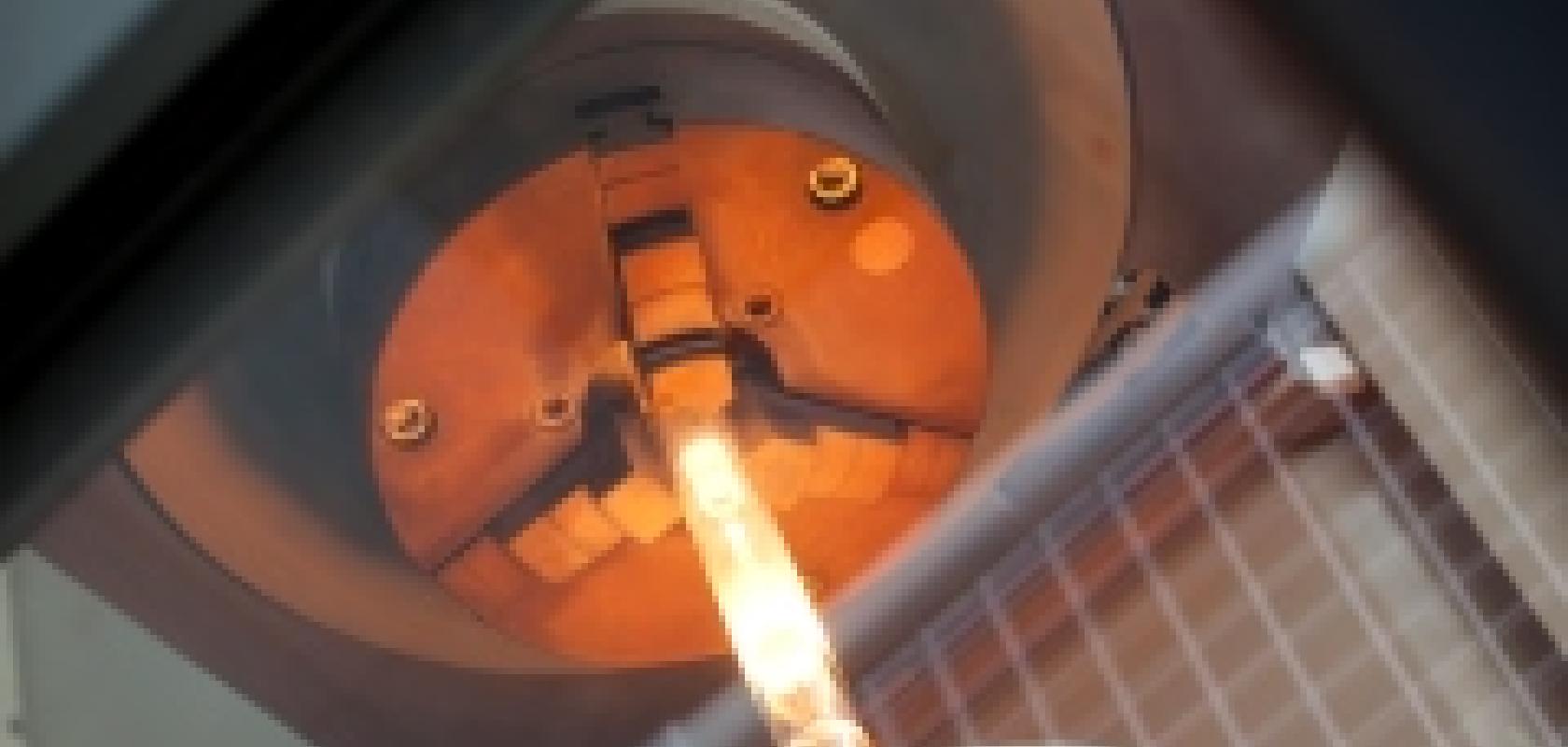A recent BCC study on the global fibre optic sensor market has predicted the sector will grow to $2.2 billion by 2018. The optical sensors’ ability to survive harsh conditions and succeed where their electrical equivalents would fail is allowing them to take over large parts of the sensing market for the aerospace, medical, industrial, telecommunications, structural, and oil and gas industries.
However, cost is still a prohibitive factor according to the report, and because of this it tends to be in applications where the benefits of fibre optic sensors are worth paying the difference – medical, aerospace, and the oil and gas industries being three areas where this is often the case. All three need sensors and require accurate measurements from systems that are able to survive in extreme environments and, according to Dr Andy Gillooly, technical business development executive at Fibercore, where failure is not an option.
Gillooly said: ‘One of the most exciting applications of fibre optic sensors at the moment is using multicore fibres for 3D shape sensing. By computationally modelling the shape of the optical fibre, you can locate it [the fibre] even if you can’t see it. This really is one of the hot topics at the moment. It was originally developed by NASA around 10 years ago, but is only now becoming commercialised.’
Gillooly remarked that this technology is particularly useful in the medical industry for in vivo processes. For example, doctors guiding a catheter in the body need to know exactly where the instrument is; a wrong turn and the consequences could be fatal. Fibercore has some exciting projects based on this idea, said Gillooly.
Currently, doctors often use X-rays to track the instrument. This puts the patient at risk from radiation as they will be exposed for an extended period of time. ‘Particularly for doctors who may have to do this multiple times over the course of a week, any development that lowers the exposure time is going to reduce health risks,’ noted Gillooly.
There is a desire to move away from knowing the position from X-ray monitoring, to knowing the exact position through the shape of the object. This is where the optical fibre sensors come in. ‘The fibre can give you feedback as to whether you have turned left, right, up or down, as well as letting you know if it is being stretched or compressed,’ said Gillooly.
This feedback is created by observing the multiple cores within the fibre although, technically, only four are required – three cores in a triangle formation around a central core. If the fibre is bent, the core on the inside will experience a compression, whereas the fibre core on the outside will go through an extension.
Extension of the fibre will cause a longer wavelength of light, whereas the compression shortens the wavelength. By measuring the differential between the wavelengths in the different cores, the direction the fibre is bending can be determined. ‘The three cores effectively cover the x, y, and z directions,’ said Gillooly.
To measure the shift in wavelength the fibres have Fibre Bragg Gratings (FBGs) written within the core. Gillooly said that normally this was done by removing the coating of the fibre, creating the grating and then recoating the surface. However, he warned: ‘Because these traditional approaches require an acid or a mechanical method to remove the section of coating, this will unavoidably weaken the fibre.’
However, Gillooly said that Fibercore has begun commercialising FBGs, written using a femtosecond laser that can inscribe the gratings in the core without having to strip the coating away – which, on large scale production, can save time and money. This also gives the end user another benefit. ‘As we haven’t stripped away the coating, we haven’t had to reapply a coating which means the inherent strength of the core is maintained.’
The increased strength of the FBGs can drastically improve performance for certain applications, continued Gillooly. ‘It gives the user greater confidence in the sensor.’ Within an aircraft wing, optical fibre sensors are incorporated into the wing’s composite design which allows the operator to observe any movement in the wing. ‘Because of the increased confidence you will know that if you measure a failure, it is unlikely to be of the fibre, but instead of the material it is embedded in.’
Gillooly noted: ‘If the fibre is being embedded into the laminate layer you really don’t want it to disturb the material too much. Reduced diameter fibres, with cladding diameters down as far as 50µm are becoming popular. This is roughly the same size as a human hair and drastically reduces any disturbance to the laminate layer.
‘Within an aircraft wing you know where the fibre is and therefore do not require multiple core fibres to measure the shape or direction,’ said Gillooly. A single core fibre, similar to the ones found in the telecoms industry can be looped to another position on the wing and measure the differential between the two areas. While this is currently the case, increasing specialisation is occurring, as Gillooly explained: ‘While standard telecom fibres can be used for this, they are not optimised for the application largely due to their coatings.
‘To fix the laminate layers, the glue is often thermally cured but traditional coatings, such as acrylate, start to degrade above 85°C.’ Gillooly said Fibercore is using a thin polyimide coating instead, which maintains mechanical reliability to roughly 300°C to help deal with this.
But it’s not just high heat that the fibres have to cope with; mixed signals can also be a problem. FBG’s are inherently sensitive to both temperature and strain, explained Gillooly: ‘This is one of the wonderful things about these sensors, but it is also one of the most problematic. It can be incredibly difficult to tell the two [temperature and strain] apart.’
In the aircraft’s wing the sensors are used just to measure the strain put on the wing, but they are exposed to the cold air temperatures found at 30,000 feet. This means the wavelength changes can be both due to temperature and strain, which can cause inaccurate or misinterpreted results. Gillooly said: ‘The sensors can measure temperature changes of below a degree very comfortably. As the temperature rises, the fibre expands and the thermal optic coefficient changes. With increasing temperature, the wavelength of the FBG increases and decreases for reducing temperatures.’
Gillooly explained that, to combat this, a control sensor must also be placed on the wing which means placing another FBG near the original monitoring area. However, this must be kept from any strain to avoid the reverse of the initial problem.
Oil well monitoring
The femtosecond FBG processing can also benefit other applications, noticeably the oil and gas industry. The femtosecond laser does not need a photosensitive fibre to write the grating – unlike traditional processes, which required the silica core to be doped with germanium.
Under the high pressures and temperatures found in an oil well, germanium-doped fibres display a higher level of hydrogen attenuation – known as hydrogen darkening – than pure silica core fibres. Gillooly said: ‘This makes the fibre unusable very quickly and in particularly aggressive wells this can happen within a number of hours.’
Replacing the fibre is inconvenient; to remove the faulty instrument from an oil well and insert an operational one, production has to be stopped, explained Gillooly. ‘This has a very large financial association; we are talking in the order of a million dollars lost during the replacement process which can take up to a full day. So again, similar to the aerospace industry, it all comes back to reliability.’
Gillooly concluded: ‘Now though, with the femtosecond gratings, pure silica core fibres can be used which do not react with hydrogen in the same way. This increases the lifespan of the fibre, which means it doesn’t have to be replaced as often.’
The light source is equally as important when using fibre optic sensors and, according to NKT Photonics’ product line manager for the Koheras range, Søren Løvgreen, the lasers often have to deal with the same harsh environments. He said: ‘The oil and gas industry requires long term and unproblematic laser operation as it is complex and costly to replace parts in a sensing system in operation, not to speak of expensive downtime at some remote location, for example in an offshore environment.’
Another example of extreme environments where this sensing is used is in space; the European Space Agency’s Swarm Earth-orbiting satellite mission is using NKT’s fibre lasers.
NKT specialise in laser sources for interferometric fibre optic sensors, which can be used for fibre optic gyroscopes and acoustic sensing.
The company’s flagship line, the Koheras fibre laser family, is mainly designed and manufactured for acoustic coherent fibre optic sensing systems, because of its low phase noise and high frequency stability. Furthermore, the lasers are configurable in multi-channel systems, up to 16 laser wavelengths or more, which is especially useful for seismic sensing systems with a large number of sensors.
According to Løvgreen, for interferometric acoustic sensing systems, optical power in the range of 10 to 40mW is typically sufficient to interrogate optical fibres and sensors over distances of tens of kilometres.
In single-channel sensing systems, wavelengths very close to 1,550nm are most frequently used, and for multi-wavelength systems the lasers typically cover the entire C-band (1,530-1,575nm) with a user-defined wavelength spacing.
‘The reason the 1,550nm range is so commonly used is that it has become a standard wavelength range originally developed for the optical telecoms industry several years ago, providing access to mass produced components at relatively low cost and high reliability. This combined with the use of erbium-doped fibres has enabled us to build a very strong platform of low-noise, narrow linewidth fibre lasers that find use in optic fibre sensing systems,’ commented Løvgreen.
He noted that the systems are not expensive to run; it is an all fibre-based design without the need for any internal component replacements over time.
The total cost of ownership is therefore almost negligible, and this is an important consideration, apart from the technical features, when selecting the right laser for both the industrial and scientific user, he said.
Løvgreen added: ‘We are making progress continuously on all aspects of the laser, both on fibre and system level.
‘Our focus is on fibre optic sensing as a key strategic segment, however we also keep improving laser features that create new possibilities for researchers.’


